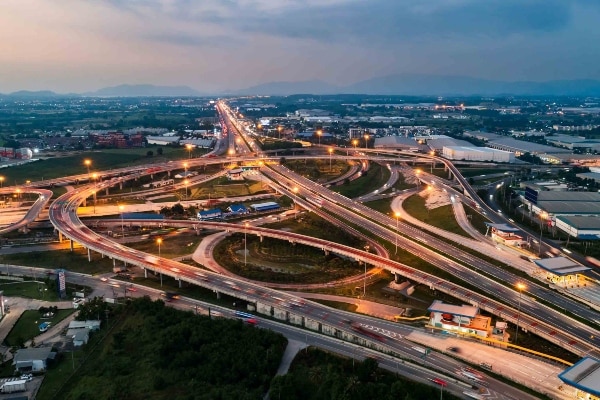-
Featured services
2026 Global AI Report: A Playbook for AI Leaders
Why AI strategy is your business strategy: The acceleration toward an AI-native state. Explore executive insights from AI leaders.
Access the playbook -
Services
Alle Services und Produkte anzeigenNutzen Sie unsere Fähigkeiten, um die Transformation Ihres Unternehmens zu beschleunigen.
-
Services
Network-Services
Beliebte Produkte
-
Services
Cloud
Beliebte Produkte
-
Services
Consulting
-
Edge as a Service
-
Services
Data und Artificial Intelligence
- KI und intelligente Lösungen
- Daten-/KI-Strategie und -Programm
- Data Engineering und Plattformen
- Daten-Governance und -management
- Datenvisualisierung und Entscheidungsfindung
- $name
- GenAI Platforms
- GenAI Industry Services
- GenAI Infrastructure Services
- GenAI Value Transformation
- Data und Artificial Intelligence
-
-
Services
Global Data Centers
-
Beliebte Produkte
-
Services
Application Services
-
Services
Sustainability Services
-
Services
Digital Workplace
-
Services
Business Process Services
-
Services
Generative AI
-
Services
Cybersecurity
-
Services
Enterprise Application Platforms
![]()
IDC MarketScape: Anbieterbewertung für Rechenzentrumsservices weltweit 2023
Wir glauben, dass Marktführer zu sein eine weitere Bestätigung unseres umfassenden Angebotes im Bereich Rechenzentren ist.
Holen Sie sich den IDC MarketScape -
-
Erkenntnisse
Einblicke und RessourcenErfahren Sie, wie die Technologie Unternehmen, die Industrie und die Gesellschaft prägt.
-
Erkenntnisse
Ausgewählte Einblicke
-
Die Zukunft des Networking
-
Using the cloud to cut costs needs the right approach
When organizations focus on transformation, a move to the cloud can deliver cost savings – but they often need expert advice to help them along their journey
-
So funktioniert Zero-Trust-Sicherheit für Ihr Unternehmen
Sorgen Sie dafür, dass Zero-Trust-Sicherheit für Ihr Unternehmen in hybriden Arbeitsumgebungen funktioniert.
-
-
Erkenntnisse
![]()
Copilot für Microsoft 365
Jeder kann mit einem leistungsstarken KI-Tool für die tägliche Arbeit intelligenter arbeiten.
Copilot noch heute entdecken -
-
Lösungen
Alle LösungenWir helfen Ihnen dabei, den Anforderungen an kontinuierliche Innovation und Transformation gerecht zu werden
Global Employee Experience Trends Report
Excel in EX mit Forschung basierend auf Interviews mit über 1.400 Entscheidungsträger:innen auf der ganzen Welt.
Besorgen Sie sich den EX-Report -
Erfahren Sie, wie wir Ihre Geschäftstransformation beschleunigen können
-
Über uns
Neueste Kundenberichte
-
Liantis
Im Laufe der Zeit hatte Liantis, ein etabliertes HR-Unternehmen in Belgien, Dateninseln und isolierte Lösungen als Teil seines Legacysystems aufgebaut.
-
Randstad
We ensured that Randstad’s migration to Genesys Cloud CX had no impact on availability, ensuring an exceptional user experience for clients and talent.
-
-
![Heineken Landing Page]()
NTT DATA und HEINEKEN
HEINEKEN revolutioniert die Mitarbeitererfahrung und die Zusammenarbeit mit einem hybriden Arbeitsplatzmodell.
Lesen Sie die Geschichte von HEINEKEN -
- Karriere
Topics in this article
In the age of AI, every network refresh is more than a technical upgrade — it’s also a strategic inflection point. Done right, it becomes the launchpad for AI-powered transformation, unlocking new revenue streams, reducing operational costs and speeding up digital innovation. Done wrong, it risks anchoring your organization to outdated capabilities for years.
Forward-looking CIOs now see network modernization not just as a routine IT cycle but also as a leadership moment. It’s a chance to reposition the network from a cost center into a growth engine that powers secure, scalable and intelligent operations.
The key? Design your network for business value, not only for uptime.
3 strategic realities you can’t ignore
1. End-of-life is a catalyst for change
End-of-life and end-of-support milestones are no longer just technical deadlines; they are strategic triggers. Yet, many organizations postpone refreshing their infrastructure until risk becomes unavoidable. According to NTT DATA’s Global GenAI Report, only 45% of organizations strongly agree they have assessed their future infrastructure needs for GenAI. The result? Nine in 10 say legacy systems are already constraining their business agility and holding back their effective use of AI.
More than a maintenance milestone, end-of-life also means you can:
- Reposition your network as a business enabler, not a legacy liability
- Mitigate escalating cyber risks
- Avoid unplanned outages and support gaps
- Unlock agility to accelerate innovation and embrace AI
This is your opportunity to lead, not react.
2. AI workloads are redefining network demands
AI is no longer experimental; it’s operational. According to our Global GenAI Report, two-thirds of organizations plan to implement GenAI in at least half of their business processes this year.
These workloads demand:
- Deterministic data paths
- High-throughput, low-latency connectivity
- Secure, scalable access across hybrid environments
Legacy networks weren’t built for this. Without modernization, your AI initiatives — from predictive analytics to customer experience — will stall because of infrastructure constraints.
3. Reactive operations are a hidden cost
Reactive network operations drain innovation capacity. Organizations spend significant time resolving network issues.
This drag on resources:
- Delays transformation
- Increases operational costs
- Limits agility in responding to business needs
Modern networks must be designed to activate AI-driven observability, automation and self-healing capabilities, shifting from reactive firefighting to proactive value creation.
Three imperatives for your network refresh strategy
1. Architect for AI-ready resilience
The rise of AI is reshaping enterprise priorities. By some estimates, organizations will spend around $3 trillion on AI initiatives between 2023 and 2027. Your network must be designed to support this scale by delivering secure, high-throughput, low-latency connectivity across hybrid environments.
This means:
- Embedding software-defined wide area networking (SD-WAN) and secure access service edge (SASE) at the WAN edge for secure cloud access
- Building campus networks that support high-density, data-generating endpoints
- Ensuring cloud networks are flexible and scalable for AI workloads
This isn’t just about performance. It’s also about enabling AI to help you realize business outcomes, from predictive analytics to real-time customer engagement.
2. Operationalize security as a business enabler
In our Global GenAI Report, 94% of CIOs report that GenAI has caused or will cause them to invest more in regulatory compliance, and 95% state the same for cybersecurity. Secure networking is now foundational, and a refresh must integrate security into every layer of the network fabric by:
- Automating threat detection and response using AI-powered telemetry
- Shifting from perimeter-based models to zero trust architectures
- Aligning network security key performance indicators with business risk metrics, not just technical thresholds
This imperative transforms security from a reactive cost center into a proactive enabler of trust, resilience and compliance.
3. Drive adoption through platform-enabled infrastructure services
The shift to platform services is accelerating. At NTT DATA, we already support more than 5,000 clients on our Technology Solutions platforms. Your network refresh must be paired with multivendor, platform-enabled lifecycle services that:
- Simplify adoption through automation and AI-driven operations
- Go beyond service-level agreements (SLAs) to utilization-level agreements (ULAs) and value-level agreements (VLAs) that improve your business
- Support sustainability goals by delivering measurable carbon savings and ensuring compliance with emerging regulations
This imperative ensures that your network will keep evolving to deliver business value, agility and competitive differentiation.
Lead the conversation
End-of-life is more than a deadline — it’s your mandate to lead. Use this moment to shift the conversation:
- Are you linking network ROI to business outcomes or just uptime?
- Which of your business goals are constrained by current network performance?
- Who are the partners committed to outcomes — not just technology or lights-on services?
Organizations that thrive in the AI era are embedding AI infrastructure services into their core operations and aligning every investment with measurable business value.



